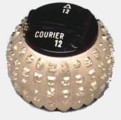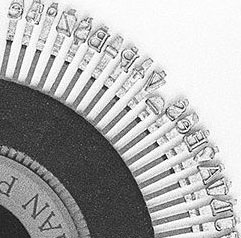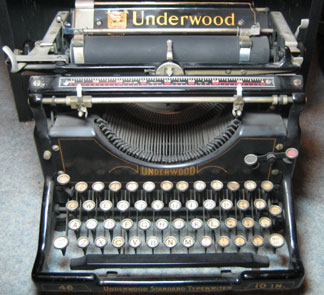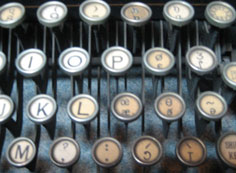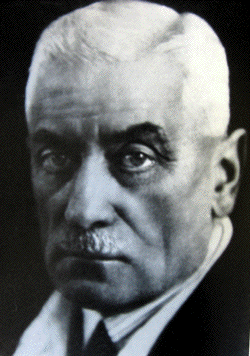DEPARTMENT OF SPEECH, HEARING & PHONETIC SCIENCES UCL Division of Psychology & Language Sciences |
 |
|
|
John Wells’s phonetic blog — archive 16 October - 30 November 2008To see the IPA phonetic symbols in the text, please ensure that you have installed a Unicode font that includes them all, for example Lucida Sans Unicode or Charis SIL (click name for free download). Browsers: I recommend Firefox (free) or, if you prefer, Opera (also free). email:
|
Friday 28 November 2008 | Entering IPA charactersOver the time this blog has been operative I have looked at various techniques for entering IPA characters into documents or onto websites. Here are two more. The first, Typeit, comes from Tomasz Szynalski of Wrocław. You have to navigate to the site ipa.typeit.org, where you find a screen like this.
Use the virtual on-screen keys to type the special characters, together with your ordinary keyboard for the standard characters. Your text appears in a box below. From there you can copy and paste into your word processor. You are restricted to the characters shown here. There is no length-mark available, though at a pinch you could use an ordinary colon. The second, IPA Palette, comes in two flavours and is much more flexible. It was originally written by Brian Hall for Mac computers (OS X 10.2 and later). It is open-source, and Mac users can download it free from www.blugs.com/IPA. It covers the entire IPA range (except the labiodental flap). Kobi Reiter has adapted it for Windows computers. You can download it free from David Montero’s website. It looks like this. | |

| ||
After you have installed it you use the virtual keys to type your text, which then appears in the box at the bottom. When you have written a word or sentence, use the copy button at the bottom right corner of the window to copy and paste into your word processor. Personally I find this type of programme pretty laborious. I prefer to use Mark Huckvale’s phonetic keyboard (click above on Resources and Tools / Phonetic Symbols Advice / Unicode Phonetic Keyboard). But I know it may not fit non-UK keyboards, and doesn’t work for Windows Vista Home Basic/Premium. But it’s excellent for Windows XP with a UK keyboard. I used it all the time when working on the third edition of LPD. Eric Armstrong has put together a package for north American Mac users who want to type IPA. You have to be a member of the VastaVox Yahoo group, then go to groups.yahoo.com/group/vastavox/files. | ||
Thursday 27 November 2008 | Rumbustuous?I heard someone on television talking of rʌmˈbʌstʃuəs behaviour, i.e. as if the word were spelt rumbustuous rather than the established rumbustious. The first citation in the OED for this word dates from 1778. There are two alternative spellings given, rambustious and rombustious: but nothing with -uous. (The OED gives the pronunciation as rʌmˈbʌstiəs, which sounds very prissy to me: I’m not sure I’ve ever heard it. The usual pronunciation is rʌmˈbʌstʃəs.) This is like the much more widespread pronunciation of (pre)nuptial as ˈnʌptʃuəl (blog, 9 June 2006). Interestingly, Google gives just as many hits for the corresponding spelling nuptual as it does for the correct nuptial, and rather more for prenuptual than for the correct prenuptial. Yesterday’s Guardian carried a full-page paid announcement headed Arab Peace Initiative. I don’t want to comment on the content or the politics of this, but I was struck by the unorthodox spelling (shall we say?) of the names of some of the countries whose flags surrounded the text: Bangladish, Azerbaigan, Muritania. This is presumably because they have gone through a filter of Arabic orthography on their way into English. Jérôme Poirrier writes to say that some years ago he compiled an extensive list of more than a hundred -y words with stress on the fourth syllable from the end (blog, yesterday): celibacy efficacy delicacy intricacy advocacy delegacy profligacy intimacy obstinacy literacy magistracy obduracy adequacy sycophancy brilliancy necromancy militancy hesitancy relevancy residency presidency exigency leniency pruriency transiency Excellency permanency idiocy baronetcy paramountcy antibody anybody everybody busybody understudy pedagogy demagogy oligarchy matriarchy patriarchy hierarchy taxidermy ignominy ceremony alimony acrimony matrimony patrimony parsimony antimony testimony hobbledehoy photocopy syllabary dromedary vinegary apiary topiary bestiary aviary breviary customary mercenary culinary seminary luminary sanguinary legionary functionary pulmonary literary honorary arbitrary adversary necessary emissary commissary mandatary budgetary dignitary reliquary antiquary statuary actuary sanctuary sumptuary estuary salivary cassowary polyandry greengrocery imagery hosiery millinery lamasery Freemasonry allegory category promissory laudatory dilatory amatory crematory minatory comminatory rotatory huckleberry loganberry Londonderry catalepsy epilepsy controversy torridity commonalty personalty admiralty temporalty mayoralty difficulty suzerainty paederasty pederasty apoplexy orthodoxy He comments, mildly, “My conclusion was that the -y ending made accentuation rather unpredictable...” |
|
Wednesday 26 November 2008 | Final -yThis is about words ending in -y. The point at issue, however, is not the quality of this vowel (usually the happY vowel), but rather stress placement. One of the speakers at the ELT conference in Ankara from which I have just returned was Michael Vaughan-Rees. He offered the audience various useful rules or hints for pronunciation teaching. One of them was that words ending in y, if they have three or more syllables, have the stress on the antepenultimate. Thus we have 'comedy, 'tragedy, 'melody, 'company, di'plomacy, ge'ography, psy'chology, di'chotomy, an'tipathy, pro'ficiency, 'chaplaincy, 'bankruptcy, 'industry Contrary as I am, I immediately thought of some counterexamples. Ken'tucky, 'angioplasty, 'celibacy, re'motely... Pondering further about it, though, I find his rule to be quite a useful one, even though there are exceptions. It nicely captures most of the relevant abstract nouns of Greek or Latin origin (see above), where the pronunciation is i, and also the -ify words, in which the pronunciation is aɪ. 'classify, 'typify, i'dentify, so'lidify, in'demnify What, then, are the exceptions? Obviously, the -ly adverbs of final-stressed adjectives: not only remotely but also bizarrely, completely and many others. And gentlemanly. And interestingly. There are the words in -ary, -ery, -ony, -ory: 'ordinary, 'dignitary, con'temporary, 'secretary, 'dromedary, 'cemetery, 'matrimony, 'testimony, la'boratory, con'tributory, classifi'catory, 'promontory (Americans do these differently from Brits, but still not in accordance with MV-R’s rule.) Students of Chomsky & Halle’s The Sound Pattern of English may be able to work out the reasons for many -acy and -ancy, -ency words being exceptional: 'celibacy, 'profligacy, ef'feminacy, con'federacy, 'obstinacy, 'occupancy, 'presidency, con'stituency Then there are the Graeco-Latin abstract nouns in which the -y is preceded by a consonant cluster: not only 'angioplasty, 'matriarchy, poly'andry and 'orthodoxy but also those where we non-rhotic speakers have reduced the cluster to a single consonant, as patriarchy. (Note that tr doesn’t count here: symmetry, psychiatry, idolatry, even pedantry follow MV-R’s rule.) Speakers vary with respect to the stress of metallurgy, hegemony, and ... polysemy and allophony. Like so many of Chomsky & Halle’s rules and pedagogical simplifications thereof, this one works ... up to a point. |
|
Thursday 20 November 2008 | Plum royalBear in mind three points:
Anne Huggett of Liskeard, writing to the editor of the Guardian, says On hearing an interview with Princes William and Harry I was struck by the absence of the posh diction we expect from the royal family. This appears to be a case of plumming down. Meanwhile, the cartoonist Steve Bell continues to show their father, Prince Charles, as very definitely not plummed down and retaining an unusual quality for the GOAT and MOUTH diphthongs. | |
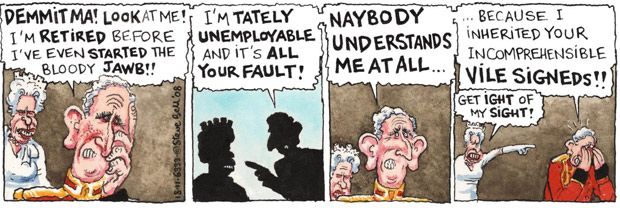 | ||
Edward Aveyard draws my attention to a YouTube clip of the Queen. He thinks she drops a yod in duty at 1:40, and also has ʊə rather than ɔː in support at 0:42. I have to say I disagree: I hear ˈdjuːti, səˈpɔːt. What do others think? Note also (pace Steve Bell) her perfectly ordinary MOUTH vowel in thousands at 0:40 and proud at 1:20. | ||
Wednesday 19 November 2008 | Golfballs and daisywheelsThe next stage in the development of machine writing, my children (blog, 14 Nov.), involved mechanical devices capable of being driven by electronic input from a computer. But you could also operate them manually, like an electric typewriter, and that’s how most of us used them. The first invention was the golfball typewriter, in which the physical metal stamps for each character were arranged around the surface of a metal sphere. (The sphere was officially called a ‘typeball’, though generally people called them golfballs.) The electrical mechanism of the typewriter rotated and tilted the golfball for each letter required, causing it to strike the ribbon against the platen. Differently from ordinary typewriters, the platen assembly remained fixed while the golfball assembly moved across the page as typing progressed. The IBM Selectric golfball typewriter came on the market sometime in the sixties. The first time I saw one in operation was at the ICPhS in Montreal, 1971. The user was limited to the 96-character set represented physically on the golfball. However, the golfball could be detached and replaced by a different one, which meant that for the first time we had a choice of fonts (type faces and type sizes) on the same machine, e.g. Elite, Letter Gothic, Courier or Pica, and 10-pt or 12-pt. A golfball could also bear special characters, e.g. accented letters for particular languages. And phonetic symbols? To begin with, phoneticians could at great expense have golfballs customized, involving the replacement of unwanted characters by phonetic ones — an operation involving casting metal type and soldering it into place. (I remember that the University of Leeds had such a customized golfball in the early seventies.) Then a company called Camwil, based in Hawaii, produced and marketed a specialist golfball full of IPA symbols, which most phoneticians bought and used. The other possibility in the seventies and eighties was the daisywheel printer. A daisywheel was a metal or plastic wheel with 96 spokes or petals, each of which bore a different character. Typing a character caused the wheel to rotate and present the desired metal stamp to the ribbon and platen, where a hammer would strike it to print the character. As far as I am aware, no phonetic daisywheels were ever produced. Daisywheel printers were about three times faster than golfballs. Both were very noisy. These technologies could produce bold text by striking several times rather than once. They could not produce italic text unless the user took off one golfball/daisywheel and replaced it by a special italic one. Next instalment: dot-matrix printers. |
|
Tuesday 18 November 2008 | Māori phoneticsIn Rotorua I bought a booklet entitled Pronounce Māori with Confidence, by Hoati Miwa (Auckland: Reed, 2003). Aimed at the general public, it isn’t really too bad at all. The material in it is clearly set out, though I wish it wasn’t presented entirely in the form of reading rules. It tells us that the letters are such and such, and that they are pronounced (= read aloud) like so and so. When serious phonetic description is called for, the author gets a bit lost. Fortunately there is a CD attached, so where the written word falters we can just listen to what it sounds like. The phonemic system of Māori seems to be very straightforward. Like other Polynesian languages, it has a five-vowel system i u e o a (short and long), a very small consonant system, and strictly (C)V(V) syllable structure. The Māori consonants are p t k f m n ŋ ɾ w h. For the consonant written wh, Niwa tells us that Wh is most commonly pronounced ‘f’, though the pronunciation varies from region to region. In the north, for example, you will hear ‘h’ or ‘hw’. In Taranaki and Whanganui, they say ‘w’. He recommends f. According to Wikipedia, generally it is more precisely a bilabial fricative ɸ. When we come to the letter r, Niwa struggles. [It] is never rolled or trilled. Its sound is very close to ‘d’ or ‘l’. When you make these two sounds, notice how you flick your tongue against your palate. To say r correctly on Māori, you flick just the tip of your tongue in the same way. The examples on the CD (listen) show very clearly that the sound is a voiced alveolar tap ɾ (the first example might even be a trill). So Niwa’s first sentence is way off-beam. He struggles again when we come to t. Listen closely and you’ll notice that it sometimes sounds like the ‘t’ in English. This is before an ‘i’ or a ‘u’. But when it comes before an ‘a’, ‘e’ or ‘o’, the sound is softer — almost like a ‘d’ in English. What he is trying to say is that before high vowels the consonant is aspirated (and to my ear sometimes a bit affricated). But before non-high vowels it is unaspirated (though still voiceless). Listen. As with the letter ‘r’, it’s to do with how you place your tongue against the palate. (Oh no it isn’t. It’s to do with glottal timing, aka VOT.) Trying to describe pronunciation without a knowledge of phonetics is like fighting with one arm tied behind your back. You just don’t have the terminology or the theoretical framework that you need. Writing from NZ in connection with yesterday’s blog, Maire (no surname given) comments It was interesting reading your take on how Maori words are pronounced in New Zealand English. It's been a mess, really, as long as I can remember (I'm in my mid-thirties). Everyone would like to pronounce things right, but hardly anyone speaks the language, so hardly anyone gets it right. That’s probably what I was commenting on for the first syllable of Tauranga, when I said the guide’s MOUTH vowel sounded rather un-NZ. He was using the GOAT vowel. The main things I notice are that most New Zealanders can do a flapped R happily, [and] many render stops like T and P with little or no aspiration in Maori words |
|
Monday 17 November 2008 | Māori namesOur cruise ship sailed from Auckland. The first port of call was Tauranga. I heard several different pronunciations of this name. The chap on the ship’s public address system called it təˈræŋgə — but he was an Australian, so not reliable as a source of information about the pronunciation of NZ placenames. The Oxford BBC Guide gives the pronunciation taʊˈræŋə, and this is indeed one of the versions I heard locally. However, the guide on our shore excursion bus, who was a Maori, stressed the name on the first syllable. On the whole he seemed to be saying ˈtaʊræŋə. But sometimes the first syllable seemed to be ˈtɔː- and/or the last part -rəŋə. His MOUTH vowel in this word sounded rather un-NZ. Most Kiwis have a quality in the æʊ region, but our guide’s diphthong started further back. Then I realized that I had been a bit slow on the uptake. Although most of the time he spoke with what sounded like an ordinary Kiwi accent, when he came to a Maori name he used not Kiwi English phonetics but Maori phonetics. Very probably what I heard was (in terms of the Maori phonetic system) ˈtauraŋa. He also seemed to pronounce the word Maori itself as ˈmɑːɾi, with a tapped r perhaps preceded by some sort of central onglide. I find that the Maori form is actually Māori, i.e. with a long first vowel. I gather that since about 1980 there has been a drive to pronounce Maori names in an authentically Maori way, rather than in anglicized form. As a result there is a lot of variability in what people say. Another complication is that only a minority of Maoris can actually speak Māori, and fewer still are native speakers. We passed through the townships of Te Puke and Mount Maunganui, which our guide pronounced tə ˈpʊki and ˌmɔːŋəˈnuːi (note anglicizing treatment of au in the latter). When I saw a road sign saying we had reached Ngongotaha I listened out eagerly for an initial velar nasal. Disappointingly, our guide called it ˌnɒŋɒˈtaːhaː with an ordinary alveolar nasal at the beginning. (But then I read in Wikipedia that “in Tu-hoe and the Eastern Bay of Plenty some speakers merge ng into n”.) Perhaps a Kiwi reader will wish to comment on this. |
|
Friday 14 November 2008 | Phonetic typewritersOnce upon a time, my children, before we had computers for word processing, we used primitive machines called typewriters. I learnt to type almost at the same time as I learnt to write, because my father had a typewriter on which I spent many happy hours even before I was old enough to go to school. That was a mechanical typewriter, as was my own first typewriter, which I bought when a student. (Electric typewriters were much too expensive for the likes of us. As for word processors, it wasn’t until the mid-eighties that ordinary people started to use computers for word processing: my first word-processed work, photoset from an electronic file, was my Welsh-Esperanto dictionary in 1985.) In order to write phonetic symbols in the days of typewriters, the machines had to be expensively customized, one or more of the standard characters (each a physical metal stamp carrying the outline of the letter) replaced by a phonetic character. The number of keys on a typewriter was somewhat smaller than the number we are now accustomed to: so no square brackets, curly brackets or angle brackets, no backslash or vertical bar, and in the UK no $ or #. You made an exclamation mark (!) by doing dot-backspace-apostrophe. On the other hand we did need fraction signs, not only ½ but also ¼ and ¾, to cope with our pre-decimal currency. (For an ordinary inland letter you needed a 2½d stamp, pronounced ˌtʌpniˈheɪpni.) So there were not many keys that could be made available for phonetic symbols. That is why symbol economy was so important in phonetic transcription at that time. On my first typewriter I had ə θ ð ŋ ʃ ʒ ɑ, which was enough to type Jones’s ‘simplified’ transcription of English. I was the envy of my fellow-students, who had to write all phonetic symbols in by hand. But I could not use it to type our modern Gimson-style transcription, nor a phonetic transcription of French or German. Specialist institutions such as university departments were able to afford specialist typewriters. At UCL we had several. Our most elaborate machine, known familiarly as the Mighty Wurlitzer, had two full-size keyboards yoked together and a sturdy lever to move the platen assembly physically across along a shaft from one to the other. On the left keyboard were the standard typewriter characters, on the right keyboard were the phonetic ones. Many of my early lecture handouts were created on it (using wax duplicator stencils — we didn’t have xerox machines in those days). I wonder if anyone still has a picture of it. My picture shows a phonetically equipped Underwood typewriter dating from (probably) the late twenties. I agreed to look after it when the department decided to get rid of it sometime in the eighties. |
|
Thursday 13 November 2008 | All at sixes and sevensChanging planes in Singapore, I saw an illuminated sign in a duty-free shop comparing the shop’s own prices with those you’d have to pay in Duckland. It took a moment for me to identify this misspelt New Zealand destination. A nice graffiti anecdote I picked up during my recent visit to Australasia: On a wall in New Zealand, some dissatisfied local had scrawled NEW ZEALAND SUCKS To which a visiting Australian had riposted AUSTRALIA SIVVERN Explanation: one major difference between the Australian and New Zealand accents is the quality of their KIT vowel. In New Zealand the vowel in the lexical set KIT is strikingly centralized, being a closish schwa-like vowel somewhere between ɨ and ə. (I would write it as ɘ, in accordance with the current edition of the IPA Chart, if anyone actually used this symbol, which in my experience they don’t.) Hence when New Zealanders say six they sound to outsiders as if they are saying sucks. Their DRESS vowel, on the other hand, is so close that it sounds like everyone else’s KIT vowel, approximately ɪ. Their set sounds like my sit, their desk like my disc. Hence when they say seven they sound to outsiders, including Australians, as if they are saying something that could be represented as sivvern. |
Monday 20 October 2008 | Guillain-BarréShane Smyth, who lectures on medical topics at an institute in Houston, Texas, writes: I have to give a lecture on Guillain-Barre syndrome this week. I speak a little French but I think I've always been mispronouncing it. I have not been pronouncing the Ls although I think I correctly say the nasal '-ain'. Fortunately this is a name I added when revising LPD for the current edition. Here’s what the entry looks like.
I agree with Shane that the usual American pronunciation is without the l-sound that would be correct from the French point of view. The respelling ghee is no more than a way of trying to be explicit that it’s as in geese, i.e. giː not dʒiː. The French spelling ll is notoriously ambiguous, as we see by comparing ville vil with fille fij, and indeed Guillain with Guillaume. So you can sympathize with people who get it wrong: they’re trying too hard to sound French. |
|
Thursday 16 October 2008 | Character coordinationHere is a Reference Table of Phonetic Symbols drawn up, probably sometime in the 1960s, by Stephen Austin, the printers responsible for typesetting the old Maître Phonétique and later JIPA. A.C. Gimson and later I, as editors, used it to communicate with the printers and also with authors, who were asked to identify any special characters in the manuscript by referring to the coordinates shown in the table. This was in the days before the current IPA Handbook, and long before Unicode was invented, so we needed a way of identifying special characters with certainty. Thus for example the character ɑ, the symbol for cardinal 5, a back open unrounded vowel, was referenced as 1b, and ɖ, voiced retroflex plosive, as 2h.
There are not many ready-made combinations of diacritic and base letter here, so it is surprising at first to see 5a, the voiced fortis labiodental fricative. Perhaps some author had asked for it to represent Dutch v: I can’t think of any other use for it. (It is not necessary, and the symbol v is entirely adequate for Dutch as long as it is understood that its articulation is fortis, and that it is distinct from both f f and w ʋ.) But then what is its alveolar counterpart doing at 10h? The diacritic at 3g and 8j, a sort of ogonek used to show lowering, was replaced, in 1989 I think, by the down tack as in e̞, o̞. The subscript dot, used to show raising, was likewise replaced by an up tack, so that 2d became ɔ̝ (not properly visible in Lucida Sans Unicode). The old click symbols at 11e, 14f, 14g have given way to ǀ, ǁ, ǃ. Symbol 8a, formerly used for the Japanese moraic nasal, has been abolished, while 6b and 9d have been superseded by ɪ, ʊ. The palatalization diacritic in 3a, 7f, 8b, 9j, 10g, 11g, 12f, 13c has been replaced by the superscript ʲ. (Perhaps that’s the explanation for 5a, too: was it really meant to be a palatalized voiceless labiodental fricative?) |
|
Blogroll links:
- DCblog (David Crystal)
- Language Log (Mark Liberman, Geoff Pullum et al.)
- John Maidment
- Separated by a common language (Lynne Murphy)
- Linguism (Graham Pointon)
- PhonetiBlog (Jack Windsor Lewis)
Archived:
To search my web pages, use this Google search.





